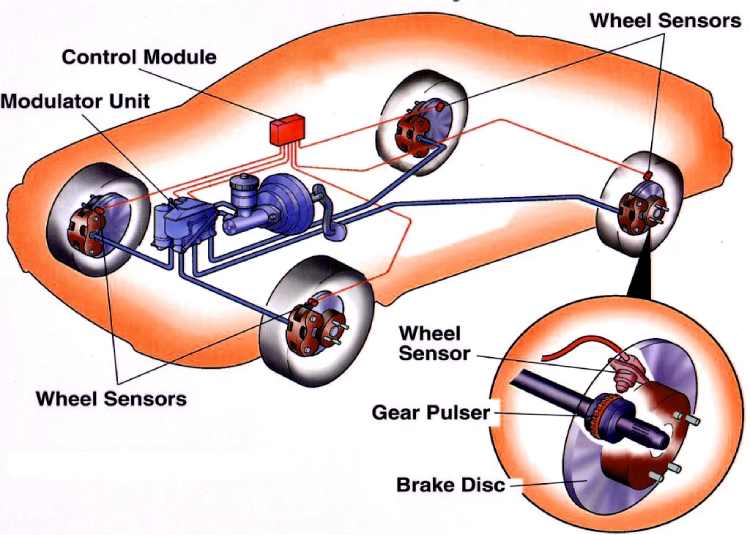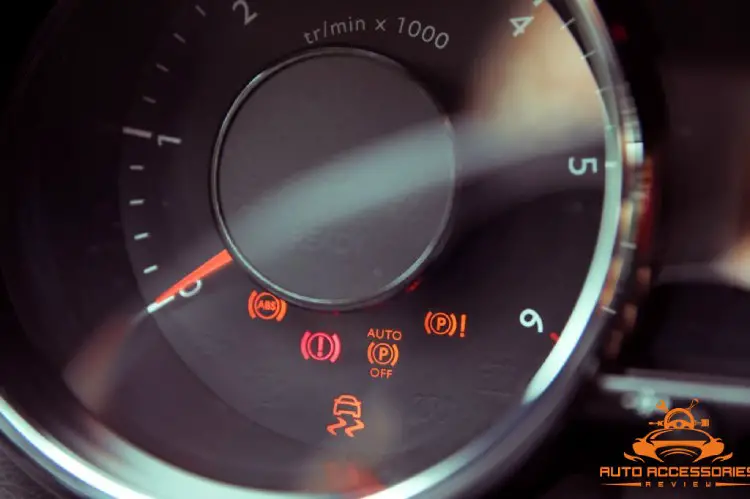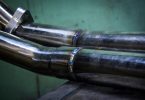Most of today’s cars are equipped with a Traction Control (TC) system. While it does not replace the Anti-lock Brake and Electronic Stability Control system, the three do work together to ensure your safety. Here we answer the question of what does TC mean on a car, why the light comes on, how and when to turn it off and how to fix the TC system.
What is Traction Control?
When driving in the winter, your tire may hit some ice. As the tire loses its grip on the road and spins, the traction control shifts the power away from the tire with no traction to the three tires with traction and will trigger the brakes too. This switch in traction allows the vehicle to stay in control and drive safely. Using the vehicle’s computer, the traction control system can detect if a tire is slipping and when to transfer this power. The traction control will also trigger if your car losses traction as you round a corner.
The most effective use of the TC is when you slow down or are stopped and begin to accelerate and when you are on a slippery incline or hill. Traction control gives you control over the vehicle. While it works pretty well in the snow, it does not work as well as snow tires.

Photo courtesy of Scienceabc
Types of Traction control
Your vehicle has two types of traction control, mechanical traction, and electronic traction.
Mechanical traction control readjusts the power to the wheels that still have traction using an actual device like the limited-slip differential. The electronic traction control monitors the wheel’s speed using sensors to adjust the engine speed. Together they keep the wheels on the road in slippery driving conditions.
Traction control, Anti-lock Brake, and Electronic Stability Control
The anti-lock system (ABS) helps your car stop, The electronic stability control (ESC) helps maintain turning control, and the traction control (TC) enables you to accelerate. It sounds simple when in fact, all three systems are complex.
The anti-lock brake system has wheel sensors that monitor speed. A controller monitors these sensors, so if one tire becomes slower than the others, it triggers the hydraulic valve to decrease brake pressure on that wheel. This increases the wheel’s speed.
The traction control also monitors the wheel speed sensors in the anti-lock brake system, so when a wheel loses traction or slips, the traction control reduces the engine power to control the traction.
When the car veers to one side, a yaw rate sensor decides the direction of the vehicle. The wheel speed sensor monitors the speed of the wheel. A steering angle sensor determines the intended path of the car, and an accelerometer determines if the wheel is sliding. Once the control module reads the difference between the steering angle sensor and the yaw rate sensor, it triggers the hydraulic system to boost the braking power to the affected wheel. This enables the electronic stability control to apply the brake to the affected wheel to decrease engine power and control the vehicle.
All three systems work together at different points of the swerve to help the driver maintain control of their car.
Enabling traction control
When you start your car, the traction control light comes on with the other dashboard lights, then goes off. When the light stays on or comes on while driving, it warns the driver that something is wrong with the traction system. To reduce the chances of the issue getting worse, it is vital that you have this checked out as soon as possible. In some cars, the light looks like a car sliding on the road. In others, it is TC with a line through it. You don’t have to turn the traction control light on, but in some situations, you must turn it off manually.
What Triggers the Traction Control Light
-
Faulty steering angler sensor
When the steering angler malfunctions, the stability system goes berserk, sending signals that turn on the traction control light.
-
Poor tire condition
Lack of tire tread affects traction. Poor traction will cause the traction control light to come on.
-
Traction control module
A faulty control module will disarm the traction control, making it difficult to control your vehicle.
-
Bad wheel speed sensor
A faulty wheel speed sensor won’t trigger the control module, so the hydraulic pump will not increase the wheel pressure, which would speed up the affected wheel.
-
Brake fluid level is low
Low brake fluid affects the efficiency of the brakes. This compromise in the ant-brake system turns the traction control light in.
-
Worn brake pads affecting the ABS
Worn brake pads affect how the vehicle stops, causing the traction control light on and sometimes the ABS light as well.
-
Wheel speed sensor has damaged wires
Broken or shorted wires make the sensor worthless. In turn, it affects tire speed as the anti-lock brake system tries to adjust the tire speed and stop.
- Decreased tire pressure
Underinflated tires have decreased traction, causing the vehicle to slip and slide on the road, especially in bad weather.
- Internal module failure in ABS, including electric power motor or hydraulic pump
When any part of the anti-lock brake system malfunctions, the anti-lock brake system will not stop the vehicle correctly.
- Poor road conditions
Hitting large bumps and potholes can loosen and disconnect essential parts of the traction control, anti-lock brake, and electronic stability control systems. Sensors are the most common parts to be affected.
When to use traction control
Traction control should be used when the road is slippery and in the rain and snow. Traction control is ideal for new drivers who have little experience with the car sliding on ice and water.
But some situations warrant turning the traction control off. You don’t need traction control on dry pavement. Driving in sand, mud, or deep snow, you may need to turn it off, so the tires can spin to get better traction. Some more experienced drivers feel they have enough experience and don’t need the traction control, as it limits their driving.
If you use chains on your tires in the winter, the traction control should be off, so the chains are effective
On most vehicles, you can turn off the traction control by pressing the traction button on the steering column on the left of the dashboard, the center of the dashboard, or the center console. If you can’t locate it, check your owner’s manual for its location.
Dangers of driving with the traction control light on
It is safe to drive with the traction control light if the weather is good. If the driving conditions are snowy or wet, you won’t have the same safety and risk the chances of swerving, sliding, or having an accident.
If the traction control warning light blinks, the system is deactivated, and you have no traction control. Care should be taken when driving in rain, snow, or ice. If the traction control light, the red brake light on the dashboard, and the ABS light are on, the braking system may not work, and the vehicle shouldn’t be driven at all!

Fixing the traction control light should be done by a mechanic. It should be correctly diagnosed by the mechanic, who can scan the entire system. The traction control system may not even be the problem. The problem could be a faulty throttle position sensor in the engine management system. The powertrain system may also be at fault.
Wheel slippage can be caused by jerky or rough power applications where the axel, drivelines, and constant velocity joints are faulty. It is not uncommon for a rough transmission shift or bad misfiring in the engine to cause wheel spin making the traction light come on.
What is the cost to fix the traction control system?
Considering the danger of driving with a faulty traction control system, the price is worth your safety. A traction control replacement switch is between $80 to $95. Parts are about $50, and the labor may be around $50. All total, you are looking at $195 to $200.










Leave a Comment